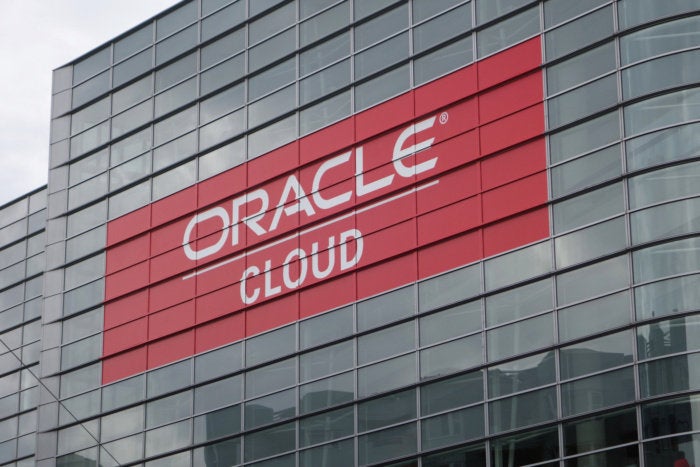
We’re going back to the future with commercial Linux. In case you missed it, Red Hat apparently got tired of companies masquerading as communities, building Red Hat Enterprise Linux (RHEL) clones through CentOS code and giving nothing back, not a line of code nor a penny. Some have called it freeloading. I called it a bad idea for enterprises to cut off cash to the company they ultimately depend upon to deliver enterprise Linux.
In the wake of Red Hat’s decision, a range of Linux vendors are trying to capitalize on the alleged dissatisfaction with Red Hat’s mood. SUSE’s Dr. Thomas Di Giacomo decided he needed “to shed as much light as I can on the decision and provide reassurance to the community in general,” which translated into a few hundred words talking about how SUSE cares deeply about open source, etc. It didn’t shed any light on Red Hat’s decision and didn’t provide any reassurance to “the community in general” (whatever that means).
By the time you read this, or soon thereafter, SUSE has promised to make “a significant announcement … which will have a far-reaching impact on RHEL/CentOS users and the wider open source community,” according to the company’s PR firm. But in this “promise to further the spirit of open source,” SUSE’s reaction will be as irrelevant as decades of attempts to change enterprise buyers’ minds about RHEL. The peace, love, and Linux crew can’t seem to understand that IT buyers don’t care nearly as much about “the spirit of open source.” The biggest competition to Red Hat won’t be SUSE or Rocky or Alma. It will be AWS or one of the cloud vendors because they’re selling what enterprises actually want: Linux that “just works” without having to think about or manage it.
We’ve seen this movie before
We never seem to learn from history. I was part of the United Linux effort in the early 2000s while working at Novell. Scared by Red Hat’s early popularity, a group of would-be contenders to the Red Hat throne, including SUSE, Turbolinux, Conectiva, and Caldera (which became SCO Group), banded together to try to define a common, competitive distribution. It failed. Completely. As I’ve written, “It turns out the market didn’t want a common Linux distribution created by committee. They wanted the industry standard, which happened to be Red Hat.”
Fast forward to 2023, and no one is clamoring for a resurrected United Linux, but CentOS had become a way for people to use RHEL without paying for it. It was, in some ways, a United Linux that actually worked, as it gave the companies behind Rocky and Alma Linux a way to compete without contributing. Now that’s gone, and there’s much hand-wringing over how hard it will be to continue delivering Red Hat’s product for free. Rocky Linux assures us it will be possible, in a poorly named post about this “Brave New World.” (I wonder if they’ve read that book, as it doesn’t portray a particularly bright future. But I digress.)
To those who insist that it’s not, in fact, Red Hat’s product, it’s “the community’s,” well, I have some bad news.
Yes, Red Hat depends on the hard work of many developers who don’t work for Red Hat. Red Hat also employs a considerable number of developers who actively contribute to the upstream projects that feed into the Linux kernel. That’s how it works. But when Red Hat releases its build of Linux, that product is Red Hat’s, not “the community’s,” and customers realize this. They buy RHEL. If customers wanted generic Linux they could get it in hundreds of flavors. They don’t. They want RHEL.
Way back in 2007, when Novell started stumping for Red Hat to become more interoperable (read: to make it easier for competitors to siphon off its customers), I wrote, “Linux doesn’t need a group hug. It needs more competitors. Even Oracle has the self-respect to compete vigorously and not to hold its hands out, palms up, begging for interoperability that favors its second-class status.” In rereading this, I realize that a) my writing used to be much snarkier, and b) we really are decades into Linux competitors trying to make Red Hat play by their rules to help their own competitiveness.
So, we should all be cheering for those that actually do play by the rules, like AWS.
Undifferentiated Linux lifting
Not only do the hyperscale cloud vendors such as AWS, Google, and Microsoft invest heavily in those same upstream projects that feed into the Linux kernel, ensuring long-term sustainability of their associated open source communities, but they, like Red Hat, deliver what customers actually want. When I worked at AWS, my team ran a blind survey that asked developers what they most wanted from their cloud vendor relative to open source. The No. 1 response?
“Makes it easy to deploy my preferred open source software in the cloud.”
They wanted things like Linux to just work. They wanted, to use AWS’ parlance, for the cloud vendor to take on the “undifferentiated heavy lifting” of managing that open source software for them. They weren’t looking for someone to “protect the spirit of open source.” They wanted someone to help them actually use that open source. Much of the enthusiasm for open source, as we saw with CentOS, has less to do with “freedom to modify code” and more to do with the ability to easily access and use the code. Cloud perfects some of the key reasons that made open source popular with developers.
So if you’re looking for the vendors most likely to unseat Red Hat, look beyond Rocky or Alma or SUSE. Look to those that are doing the most to make Linux easy and accessible for developers. That includes the cloud vendors, as well as companies like Oracle and Canonical (Ubuntu), all of which have made significant investments in delivering Linux as a cloud service. It’s exactly what we’ve seen play out in other infrastructure, such as databases, where cloud database vendors have supplanted legacy vendors.
Those who are fixated on Red Hat blocking their ability to easily copy RHEL are missing the point because they’re focused on the wrong thing. The right thing is to figure out how best to cater to developers, and that’s a question of cloud convenience, not licensing gymnastics.
Next read this:






